Abstract
A concurrent-chain procedure was used to examine choice between segmented and less segmented response-independent schedules of reinforcement. A pair of independent, concurrent variable-interval 60-s schedules were presented in the initial link, along with a 1.5-s changeover delay. A chained fixed-interval fixed-time and its corresponding tandem schedule constituted the terminal links. The length of the fixed-interval schedule in the terminal link was varied between 5 s and 30 s while that of the fixed-time schedule was kept at 5 s over conditions. The first components of both terminal-link schedules were accompanied by the same stimulus. Except in the baseline condition, the onset of the second component of the terminal-link chained schedule was accompanied by either a localized (key color) or a nonlocalized (dark houselight) stimulus change. Stimulus conditions were constant during the terminal-link tandem schedule. With three exceptions, pigeons demonstrated a slight preference for the tandem over the chained schedule in the terminal link. Furthermore, this preference varied inversely with the length of the first component. In general, these results are consistent with previous studies that reported an adverse effect on choice by segmenting an interval schedule into two or more components, but they are inconsistent with studies that reported preference for signaled over unsignaled delay of reinforcement.
Keywords: preference, segmentation, fixed-time schedules, response-independent reinforcement, concurrent chains, key peck, pigeons
Full text
PDF
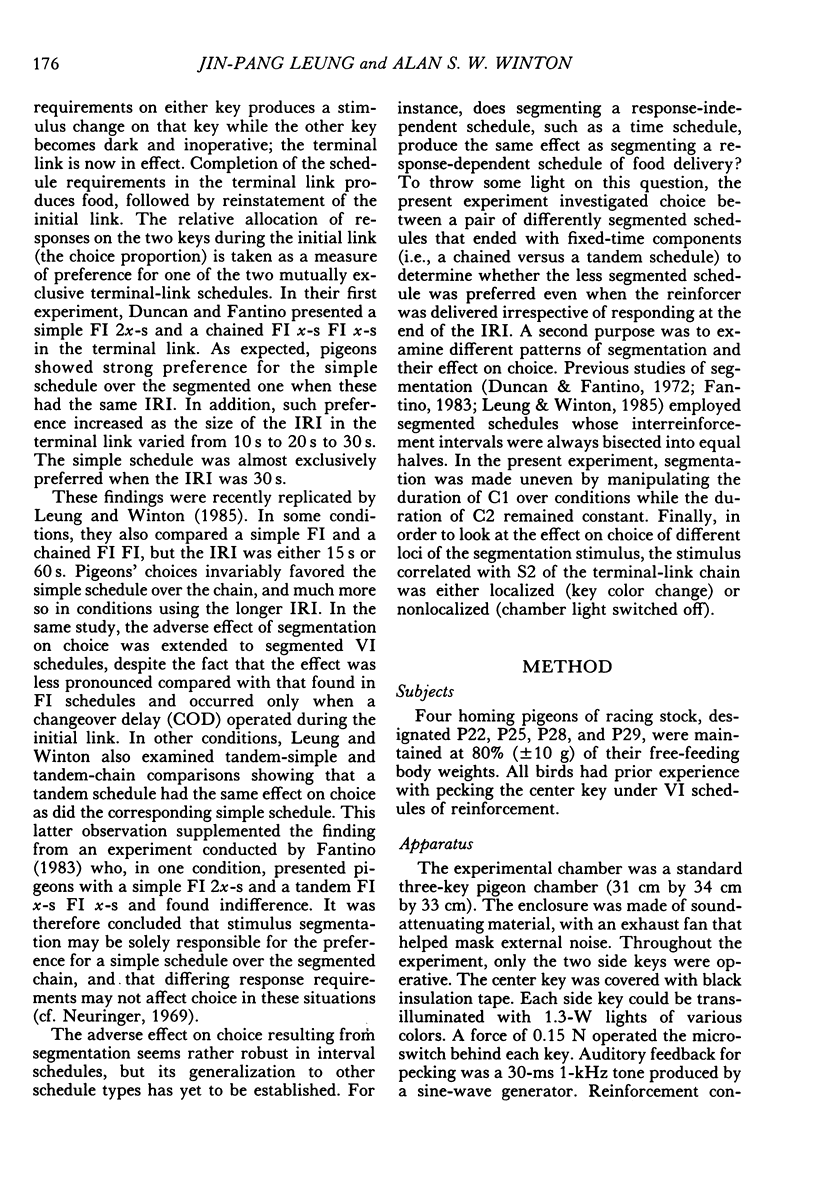
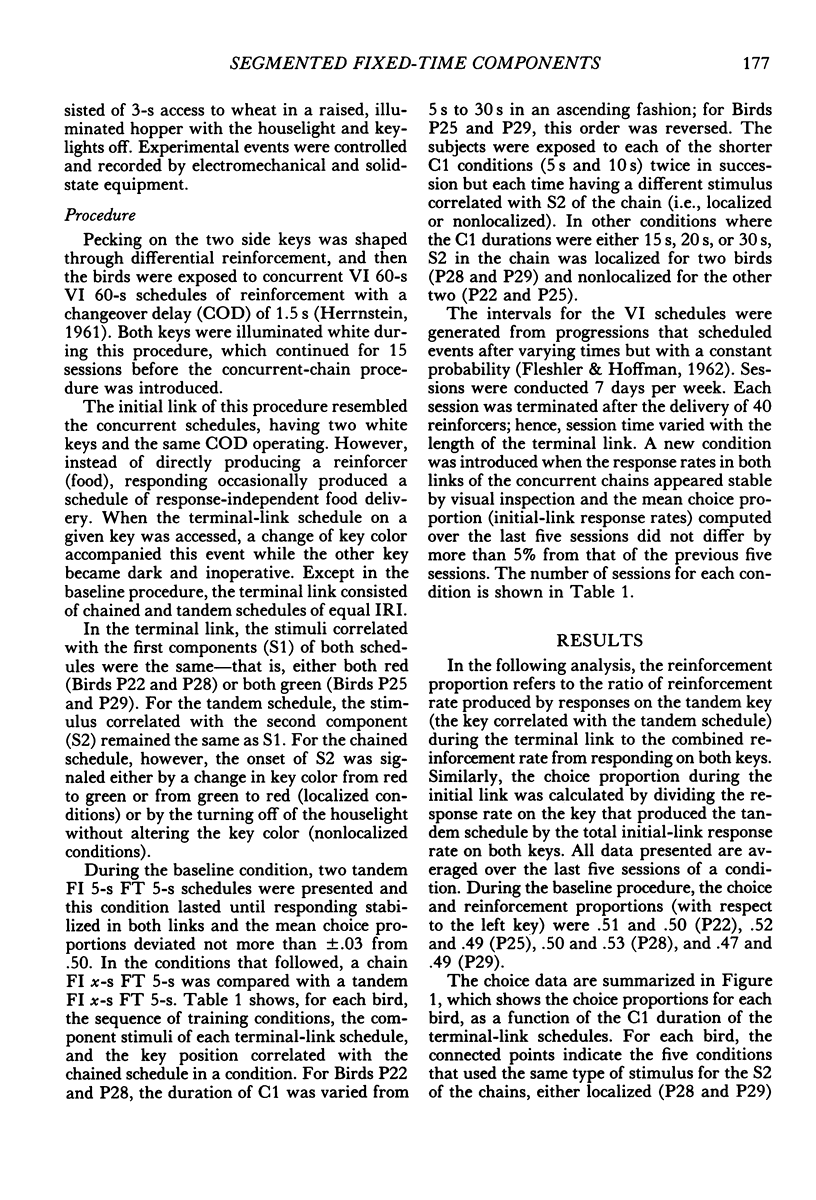
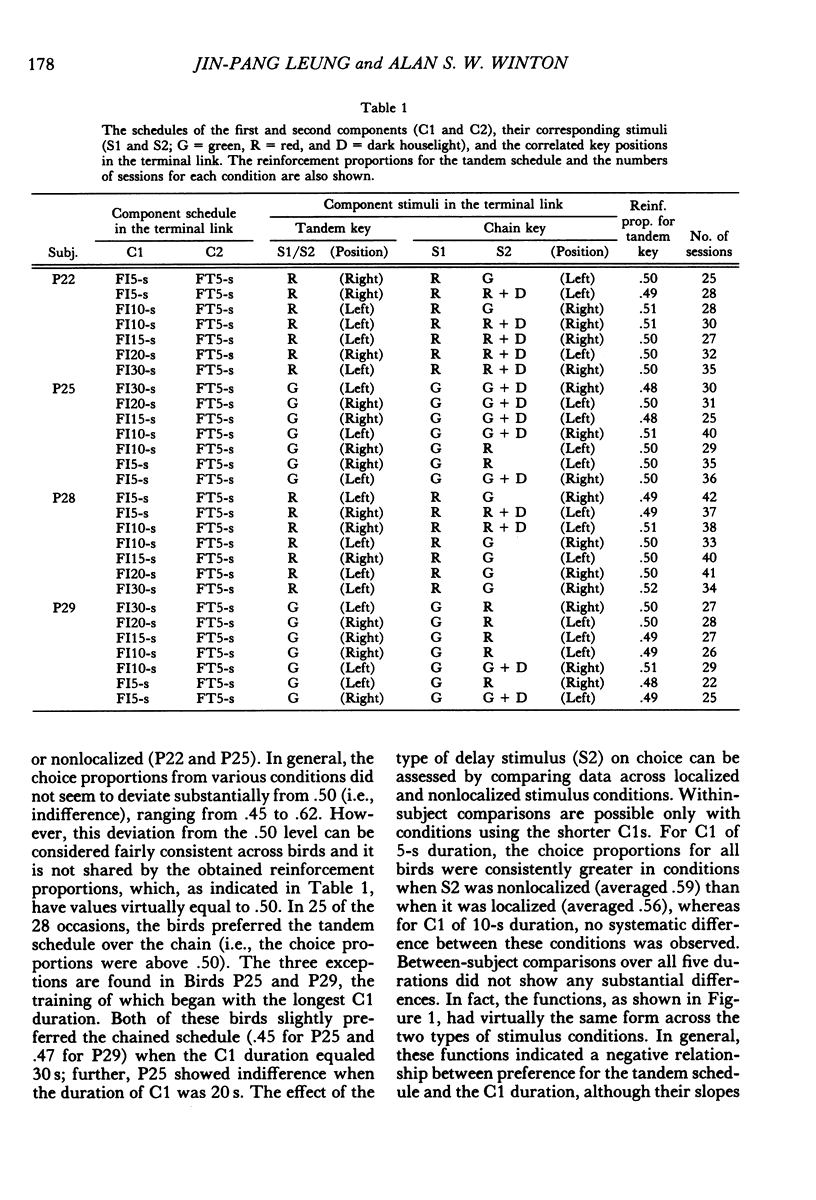

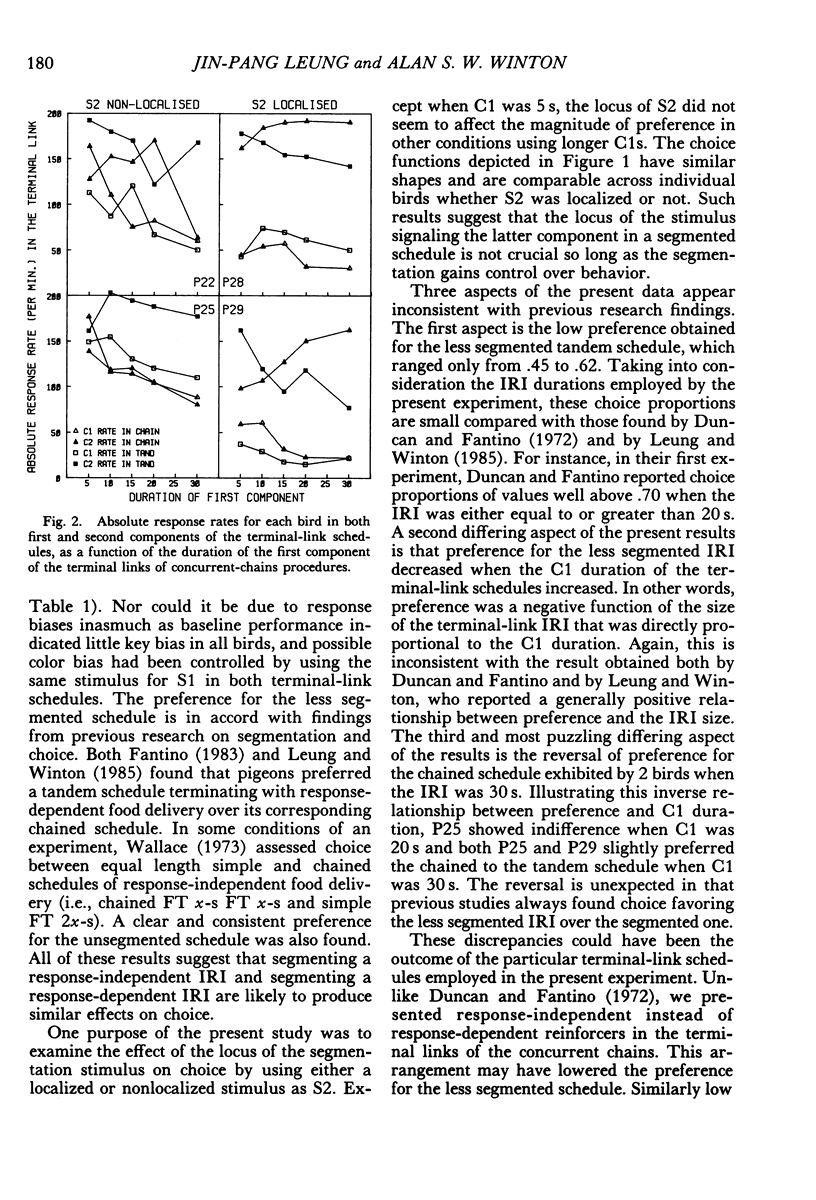
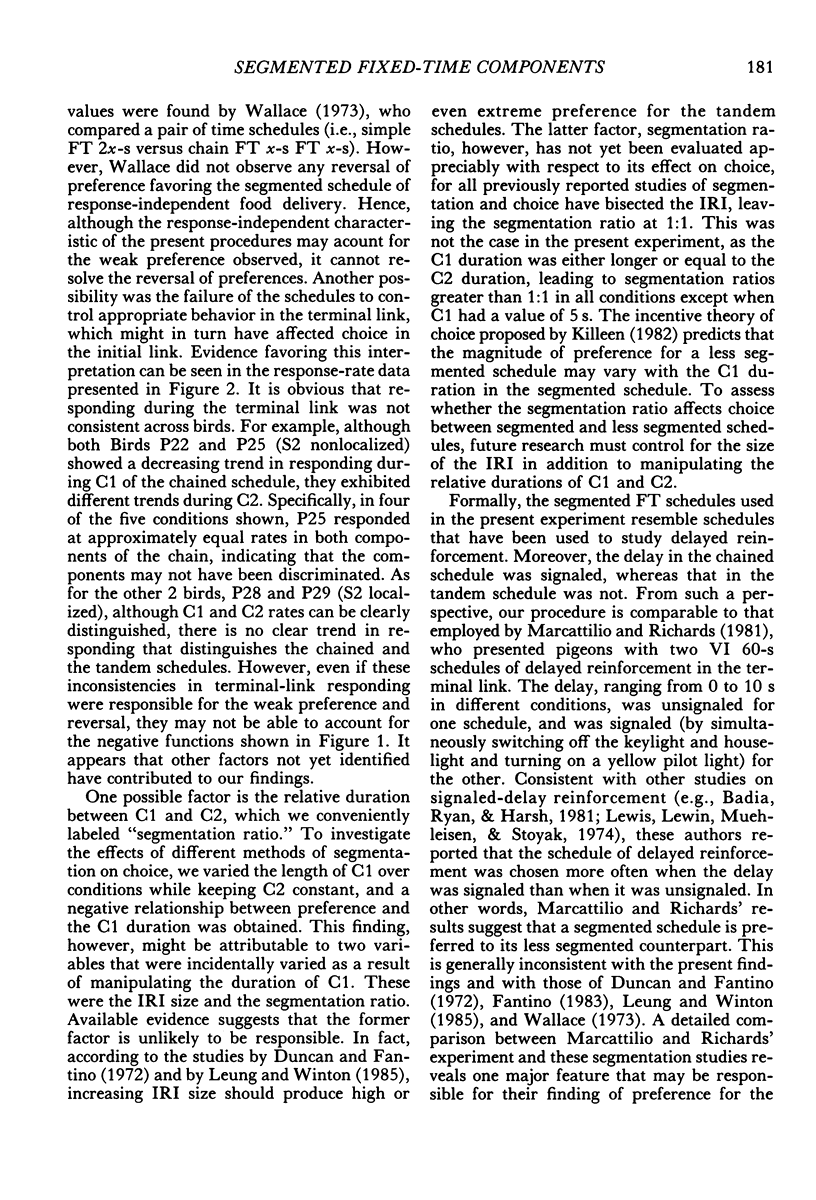
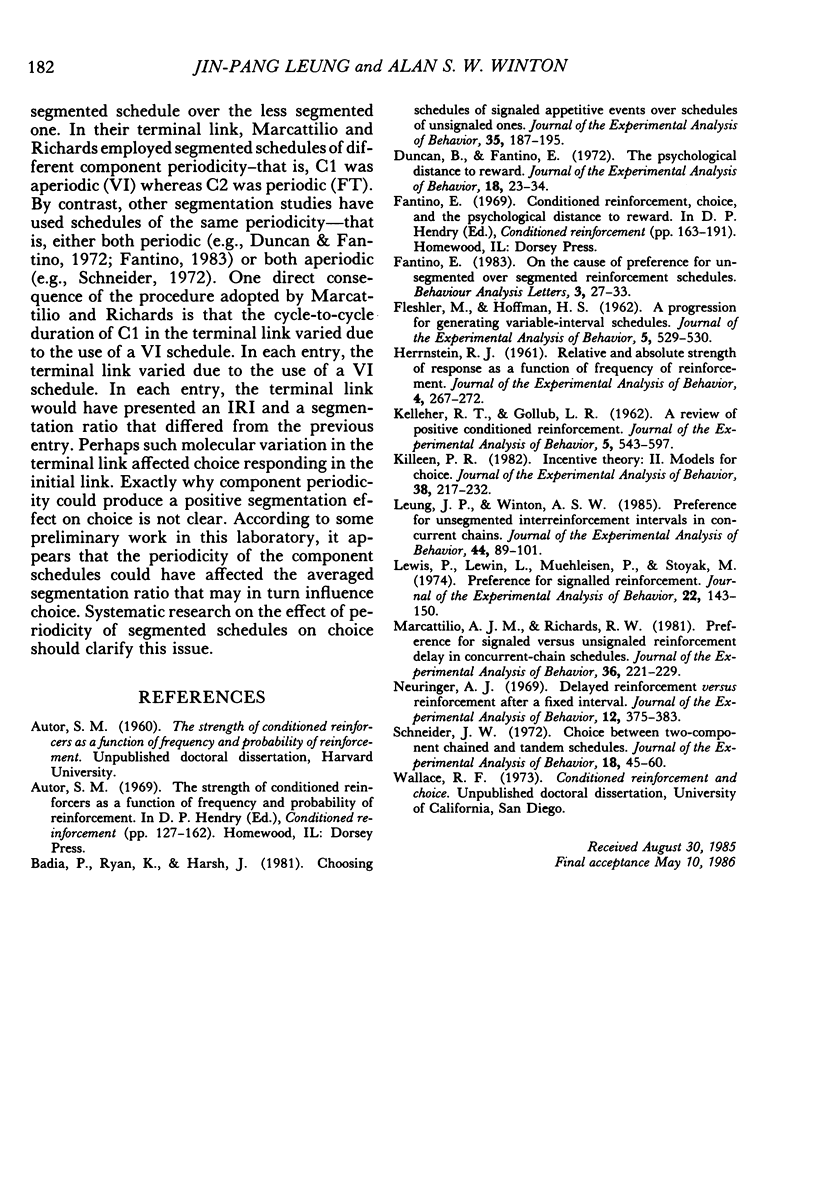
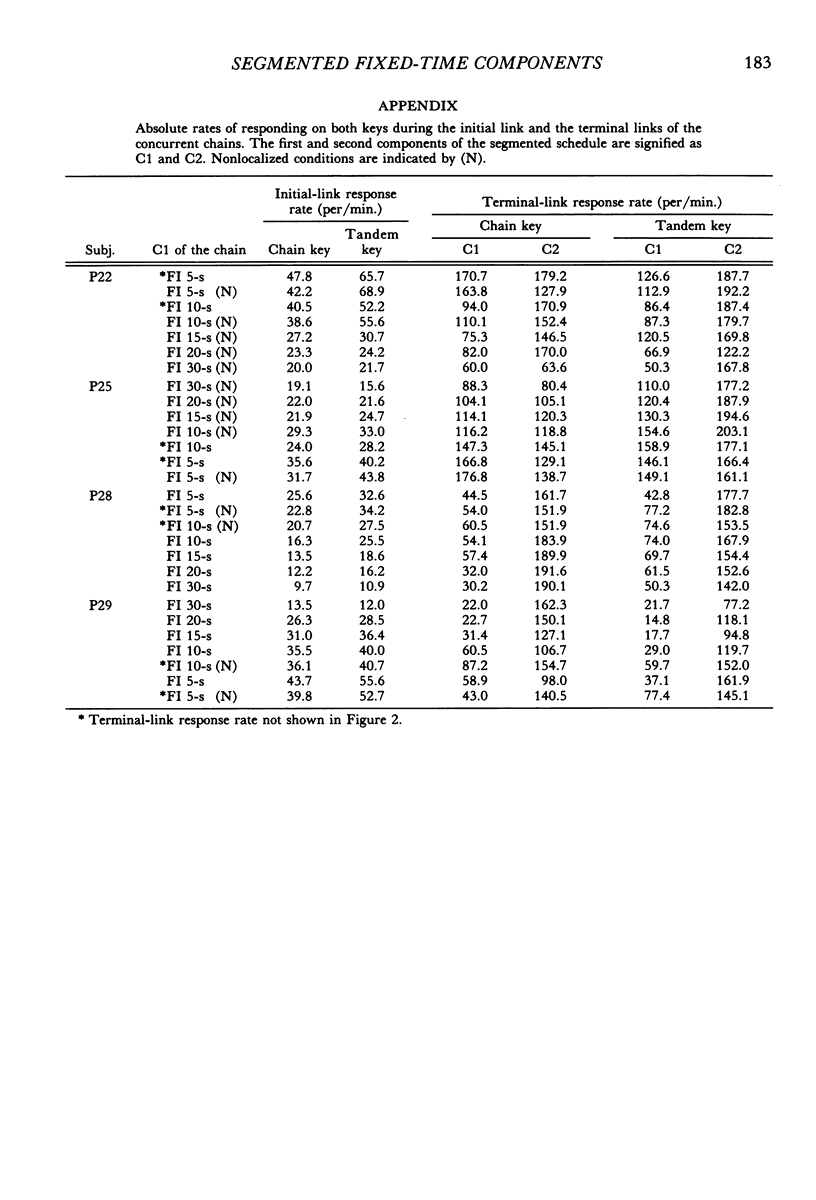
Selected References
These references are in PubMed. This may not be the complete list of references from this article.
- Badia P., Ryan K., Harsh J. Choosing schedules of signaled appetitive events over schedules of unsignaled ones. J Exp Anal Behav. 1981 Mar;35(2):187–195. doi: 10.1901/jeab.1981.35-187. [DOI] [PMC free article] [PubMed] [Google Scholar]
- Duncan B., Fantino E. The psychological distance to reward. J Exp Anal Behav. 1972 Jul;18(1):23–34. doi: 10.1901/jeab.1972.18-23. [DOI] [PMC free article] [PubMed] [Google Scholar]
- FLESHLER M., HOFFMAN H. S. A progression for generating variable-interval schedules. J Exp Anal Behav. 1962 Oct;5:529–530. doi: 10.1901/jeab.1962.5-529. [DOI] [PMC free article] [PubMed] [Google Scholar]
- HERRNSTEIN R. J. Relative and absolute strength of response as a function of frequency of reinforcement. J Exp Anal Behav. 1961 Jul;4:267–272. doi: 10.1901/jeab.1961.4-267. [DOI] [PMC free article] [PubMed] [Google Scholar]
- KELLEHER R. T., GOLLUB L. R. A review of positive conditioned reinforcement. J Exp Anal Behav. 1962 Oct;5:543–597. doi: 10.1901/jeab.1962.5-s543. [DOI] [PMC free article] [PubMed] [Google Scholar]
- Killeen P. R. Incentive theory: II. Models for choice. J Exp Anal Behav. 1982 Sep;38(2):217–232. doi: 10.1901/jeab.1982.38-217. [DOI] [PMC free article] [PubMed] [Google Scholar]
- Leung J. P., Winton A. S. Preference for unsegmented interreinforcement intervals in concurrent chains. J Exp Anal Behav. 1985 Jul;44(1):89–101. doi: 10.1901/jeab.1985.44-89. [DOI] [PMC free article] [PubMed] [Google Scholar]
- Lewis P., Lewin L., Muehleisen P., Stoyak M. Preference for signalled reinforcement. J Exp Anal Behav. 1974 Jul;22(1):143–150. doi: 10.1901/jeab.1974.22-143. [DOI] [PMC free article] [PubMed] [Google Scholar]
- Marcattilio A. J., Richards R. W. Preference for signaled versus unsignaled reinforcement delay in concurrent-chain schedules. J Exp Anal Behav. 1981 Sep;36(2):221–229. doi: 10.1901/jeab.1981.36-221. [DOI] [PMC free article] [PubMed] [Google Scholar]
- Neuringer A. J. Delayed reinforcement versus reinforcement after a fixed interval. J Exp Anal Behav. 1969 May;12(3):375–383. doi: 10.1901/jeab.1969.12-375. [DOI] [PMC free article] [PubMed] [Google Scholar]
- Schneider J. W. Choice between two-component chained and tandem schedules. J Exp Anal Behav. 1972 Jul;18(1):45–60. doi: 10.1901/jeab.1972.18-45. [DOI] [PMC free article] [PubMed] [Google Scholar]


